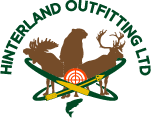Annual Increase In Big Game Surveys Welcomed
Back to BlogThe provincial government just recently announced that it will be increasing the number of wildlife surveys conducted in the province annually. The Minister responsible, Honorable Gerry Byrne, says there are forty management zones in the province and the increased surveys will help in accurately assessing populations for wildlife management purposes in shorter time frames.
Surveys will be increasing from the current three to five management areas annually to five to ten annually. This increase should allow government to do a “full sweep” of the province within a five year span.
In 2016 following a reduced budget, hunters in Newfoundland were no longer required to surrender the lower jawbones of moose and caribou they harvested during the big game hunting season. The return of black bear skulls was also discontinued. In addition skull cleaning and the collection of both coyote and lynx carcasses was discontinued and the associated payments for all carcass submitted by hunters was also ceased. All was done in an attempt to trim annual operating costs to reflect the new budget and only recently have the restraints on government purses become loosened. Surveys of any type can typically be expensive but I believe the benefits outweigh the costs.
During this period the department advised that all wildlife populations will continue to be managed effectively and efficiently using a combination of data collection, population modelling and hunter and trapper license return submissions, none of which I must point out requires any boots on the ground by wildlife staff.
However actual hands on data such as skulls and jawbones as well as carcasses are highly valuable in assessing big and small game populations and overall health. In my humble opinion this type of data and actual wildlife surveys are by far the most accurate source of data to predict our wildlife numbers and their collective overall health.
To see an increase in annual surveys is highly encouraging to say the least but what would be more encouraging would be to see a resurgence of wildlife personnel in the field throughout the province as was the norm in the 1970’s and 80’s conducting observation and surveys. It may be a more costly form for data collection but I feel the reliability of the data outweighs its counterpart submitted on license returns and through public consultation. Aerial surveys and boots on the ground should be the basis for any management plan and an annual operating budget to reflect a more rounded approach should be realized by our provincial government sooner rather than later.



